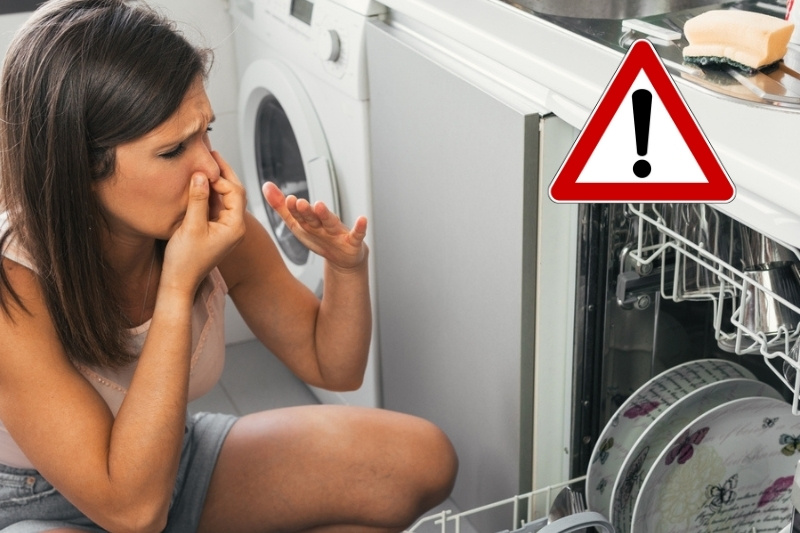Have you noticed that your dishwasher isn’t performing as well as it used to? Is there an odd smell coming from the appliance that won’t go away?
If either rings true, it might be time to give your dishwasher a deep clean.
You can use many things to clean a dishwasher, but one of the most effective and natural options is to use bicarbonate of soda, also known as baking soda.
Not only is this powder found in many kitchen cupboards already, but it is also a powerful, eco-friendly cleaning agent!
It can easily remove built-up dirt, grime, and odours from your dishwasher, leaving it sparkling clean.
Read on to learn how to use a bicarbonate of soda dishwasher cleaner, as well as how often it needs to be used to keep your appliance in top condition.
How to Clean a Dishwasher with Bicarbonate of Soda and Vinegar

Bicarbonate of soda is an excellent dishwasher cleaner that can easily remove odours and build-up from your appliance.
When used on its own, you will notice a significant improvement in the cleanliness of your machine. However, we suggest using it with white vinegar for the best results.
We recommend this combination because bicarbonate of soda and white vinegar both clean in different ways: Bicarbonate of soda is mildly abrasive and excellent at eliminating smells, while vinegar is antibacterial and will ensure any harmful microbes are destroyed.
Unfortunately, these two cleaners will cancel each other out when used simultaneously. This is called a neutralisation reaction, and it means that your dishwasher will not be cleaned as effectively.
To get the most out of both ingredients, we recommend using them one after the other, as laid out below.
If you only want to use bicarbonate of soda, feel free to skip step 3. Your dishwasher will still be deeply cleaned, but you may have to repeat the process slightly more regularly.
You will need the following:
- White vinegar
- Bicarbonate of soda
- Commercial cleaner (optional)
- Warm water
- Toothpick
- Microfibre cloths
Step 1: Clean dishwasher components

Start by removing the filter, utensil holder, and dishwasher racks from inside the machine.
Next, soak all the components in a large bowl of warm, soapy water for at least 30 minutes.
Afterwards, gently scrub any deposits using a cloth until the components are completely clean, then remove them from the water and leave them to dry.
If the build-up is particularly bad, you can also add 240 ml of white vinegar to the warm water for added cleaning power.
Ensure you pay specific attention when cleaning the dishwasher filter, as it can greatly impact the performance of the appliance.
Step 2: Remove visible debris
During the 30 minutes in which the dishwasher components are soaking, you can start to work on the inside of the machine.
Before going in with a cleaner, it is a good idea to remove any loose debris that is visible on the walls or spray arms.
You can simply use a microfibre cloth to wipe these down. A toothpick can then be used to remove any build-up from the spray arm holes or any other small crevices in the dishwasher.
Don’t worry if there is still build-up inside, as the vinegar and bicarbonate of soda will remove these later on.
Step 3: Run a cycle with white vinegar
Return the clean filter, utensil holder, and trays to the dishwasher. Then, fill a small bowl with white vinegar, place it on the bottom shelf, and start a hot water cycle.
During the cycle, the vinegar will be distributed around the machine. This will allow it to break down any remaining residues, such as food particles, grease, or soap scum.
Step 4: Run a cycle with bicarbonate of soda
After the vinegar cycle, you can finally go in with your bicarbonate of soda. Simply remove the bowl from the dishwasher, sprinkle the base with the bicarbonate, and run a regular cycle.
This will help remove any remaining stains or odours that are lingering in the machine.
Once the cycle has finished, your dishwasher is ready to use. There is no need to wash away any of the remaining bicarbonate of soda, as this will not cause you any harm.
Step 5: Clean the dishwasher door (optional)

If the outside of your dishwasher door also looks a bit grimy, you can clean it at this point. Try to choose a cleaner based on the material of the door for the best results.
For example, a stainless steel door is best cleaned by a product made for cleaning stainless steel.
Alternatively, use a mixture of dish soap, water, and white vinegar to clean the outer door if you want a more natural solution.
To use this cleaner, use a microfibre cloth to wipe it all over the surface. You can then run the same cloth under the tap and use it to rinse any residue off the door.
Make sure to thoroughly dry the dishwasher door afterwards to avoid water marks.
How Often Should You Clean Your Dishwasher?

In general, we suggest you give your dishwasher a deep clean every one to three months.
Of course, this depends greatly on how often your dishwasher is used and whether or not you pre-rinse your dishes before loading them in the trays.
This being said, we recommend cleaning the filter every month regardless of usage. This is because it is prone to food build-up that needs to be removed for your dishwasher to clean properly.
If you think this chore will slip your mind, adding it to your cleaning schedule is a good idea so that you’re reminded before the build-up becomes a problem.
Five Signs Your Dishwasher Needs Cleaning

Dishwashers come into contact with plenty of molecules that will affect their cleaning power.
This includes food particles from your dirty dishes, mineral deposits from hard water, and residue left from your dishwasher detergent.
To remain in top condition, it is important that you regularly clean out any of this build-up.
Although we recommend doing a deep clean with bicarbonate of soda at least every three months, this may need to be increased depending on how often the appliance is used.
Some of the key indicators that your dishwasher needs cleaning include:
- Unpleasant odours from inside the machine
- Noticeable food deposits in the dishwasher base, spray arms and filter
- Dishes coming out of a wash cycle with food or grease still caked on them
- Stagnant water in the bottom of the dishwasher, indicating the drain needs cleaning
- Rust deposits forming inside the machine
If you notice any of these signs, it is best to clean your dishwasher, even if your scheduled clean is not yet due.
This will prevent you from experiencing more issues in the future and will help to extend the lifespan of the appliance.
Check out our article on dishwasher cleaning hacks for some more tips and advice.

Hannah has a passion for cleaning. She worked her way around Australia by cleaning hostels in exchange for free accommodation and used her cleaning skills to bag a job as a chalet host for a luxury ski company in France.






